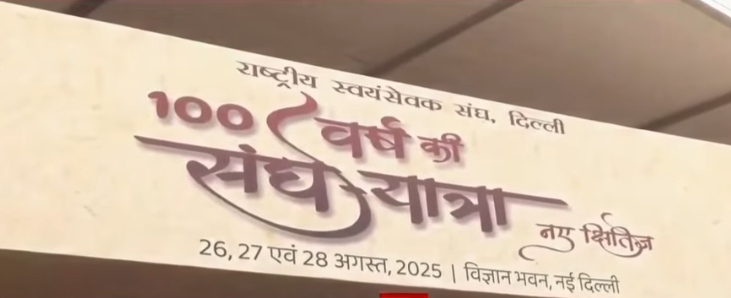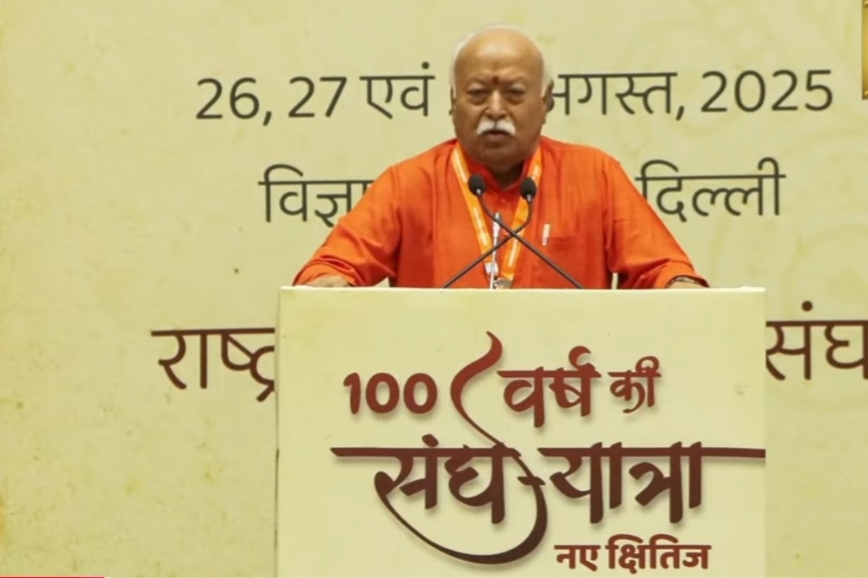
A Legacy Under the Spotlight
As the Rashtriya Swayamsevak Sangh (RSS) stands on the cusp of commemorating its centenary on September 27, 2025—exactly 100 years since its founding by Keshav Baliram Hedgewar in Nagpur—the organization stands as a formidable pillar in the nation’s socio-political landscape. Hailed by its adherents for its disciplined structure and grassroots welfare efforts, the RSS nonetheless confronts mounting critical examination from historians, scholars, and political observers. These voices illuminate persistent themes of exclusionary practices, unyielding ideological stances, and a historical ambivalence toward the democratic foundations of the republic.
This exploration traces the RSS’s trajectory, contrasting its espoused goal of Hindu unity against a chronicle marked by social marginalization, inter-community strife, and selective engagement with constitutional norms.
In a time when narratives of identity profoundly influence the polity, dissecting these elements is vital to grasping the RSS’s enduring mark on modern India.
Roots in Rigidity: Caste, Gender, and the Illusion of Inclusivity
The RSS’s origins in Nagpur on September 27, 1925, were steeped in an organizational ethos that, despite proclamations of Hindu oneness, has long been faulted for entrenching entrenched social hierarchies. Scholarly analyses point to a systemic favoritism toward upper-caste figures in leadership, fostering an environment where voices from lower castes and Adivasi communities remain sidelined. As historian Shamsul Islam observes in his work *Undoing India the RSS Way*, the RSS envisions a theocratic order “in which the Dalits/Untouchables, lower castes, downtrodden and women amongst the Hindus will have no humane or respectable place.” This critique echoes Dr. B.R. Ambedkar’s sharp rebuke of the RSS’s approach to Hinduism, which he saw as perpetuating caste oppression rather than dismantling it.
In a 1949 speech, Ambedkar declared, “The RSS is a Hindu organization. It is not a national organization. It is a communal organization,” underscoring its failure to transcend caste barriers.
Such critiques are bolstered by accounts from within, including those of former swayamsevaks who recount informal exclusions, like limited access to key roles and rituals that subtly reinforce varna distinctions. This bias permeates gender roles as well, with women largely relegated to auxiliary groups like the Rashtra Sevika Samiti, devoid of influence in the central sangh. Journalist Ashutosh, in *Hindu Rashtra: What It Is. How We Got Here*, argues that this setup preserves patriarchal and caste-based power structures under the guise of cultural revival, noting how ideologues like M.S. Golwalkar endorsed texts such as the Manusmriti that codify inequality: “Savarkar went a step yet further than Golwalkar. He brazenly supported the Manusmriti, which said that a Shudra who insults a high-caste person should have his tongue cut out.” As calls for social equity intensify across India, these ingrained disparities compel scrutiny of whether the RSS can truly embody the multifaceted Hindu populace it claims to consolidate.
Clashing with the Constitution: Ideology Over Egalitarianism
The RSS’s initial encounters with India’s constitutive framework revealed a deep-seated discomfort with the republic’s secular and egalitarian core. Archival evidence from the late 1940s shows RSS leaders decrying the Constitution as a foreign artifact, bereft of native spiritual moorings, and preferring ancient scriptures that upheld hierarchical societies as blueprints for rule. This stance not only diverged from the Constituent Assembly’s inclusive debates but also signaled a dismissal of equality and federalism in favour of a unitary, culturally monolithic state.
M.S. Golwalkar, the RSS’s second sarsanghchalak, articulated this in *Bunch of Thoughts*, where he framed national identity through an exclusionary Hindu lens: “The foreign races in Hindusthan must either adopt the Hindu culture and language, must learn to respect and hold in reverence Hindu religion… or may stay in the country, wholly subordinated to the Hindu Nation, claiming nothing, deserving no privileges, far less any preferential treatment—not even citizen’s rights.” Such views clashed profoundly with the visions of India’s founding figures. Sardar Vallabhbhai Patel, in a July 1948 letter, warned of the RSS’s “communal poison,” urging it to “eschew communal conflict, respect the Constitution of India,” and abandon secrecy to align with national unity. Dr. Rajendra Prasad echoed these concerns in correspondence with Patel on March 14, 1948: “I am told that RSS people have a plan of creating trouble. They have got a number of men dressed as Muslims and looking like Muslims who are to create trouble with the Hindus.”
The RSS’s reluctance to embrace national symbols further exemplified this selective nationalism. For decades, the tricolour was de-emphasized in favour of saffron banners symbolizing a particular revivalist fervour, only adopted more fully under political pressures. This hesitance, as historian Dhirendra K. Jha notes in *Gandhi’s Assassin: The Making of Nathuram Godse and His World*, reflected a prioritization of ideological purity over inclusive patriotism, where “the RSS distanced itself from Gandhi’s killer” only after the assassination exposed uncomfortable ideological kinships. Dr. B.R. Ambedkar, the Constitution’s architect, viewed such postures as antithetical to republican ideals, once stating that organizations like the RSS propagated a “brand of Hinduism” that subjugated the oppressed rather than uplifting them. These historical frictions illuminate the RSS’s passage from colonial subjugation to sovereign nationhood, often favoring internal solidarity over expansive consensus.
On the Sidelines of Swaraj: A Detached Patriotism
A persistent indictment of the RSS revolves around its marginal involvement in India’s independence fervor. As colossal satyagrahas and boycotts galvanized the masses against British dominion, the RSS pursued a path of calculated reserve, channeling energies into shakha drills and cadre cultivation over direct confrontation. Contemporary records, including Hedgewar’s directives, explicitly advised against participation in agitations, positing that cultural preservation superseded transient political turmoil—a view that, wittingly or not, abetted colonial order.
Nilanjan Mukhopadhyay, in *The RSS: Icons of the Indian Right*, dissects this strategy through profiles of early leaders, revealing how figures like Madhav Sadashiv Golwalkar prioritized “building the Hindu rashtra from within” over anti-imperial alliances, dismissing mass movements as potentially corrosive to Hindu discipline. Golwalkar himself, in *Bunch of Thoughts*, extolled this inward focus: “May we all rise and take the life-giving message of our innate unity to every Hindu heart,” framing external liberation as secondary to internal fortification. Detractors contend this aloofness diminished icons of syncretic defiance, recasting narratives to vilify “internal threats” like leftists over imperial foes. Sardar Patel, in a 1948 address, lambasted this detachment, declaring the RSS guilty of “speeches where they fill communal poison” and undermining the freedom ethos. As the centenary nears, this era of non-engagement contests the RSS’s self-image as an unassailable bastion of patriotism, inviting reassessment of authentic national service.
Stoking the Flames: From Partition to Persistent Polarization
The RSS’s doctrinal edifice has been implicated in widening religious fissures, especially amid the pre-Partition maelstrom.
By portraying select communities as perennial aliens, its rhetoric nurtured distrust and antagonism, amplifying schisms that hastened the subcontinent’s schism. Influences from sister outfits like the Hindu Mahasabha advanced notions of distinct nationhood’s, mirroring and magnifying demands from across the divide.
Post-Partition, RSS relief in riot-torn zones mingled with allegations of bias, where aid was laced with narratives that widened scars. Shamsul Islam, in *RSS: Marketing Fascism as Hindu Nationalism*, links this to a continuum of discord: “The terrorism is in the genes of RSS,” citing how Golwalkar’s writings sowed seeds of exclusion that “predated similar assertions from other quarters.” These patterns resurfaced in later conflagrations, with RSS affiliates accused of rallying majoritarian fervour over reconciliation. Dr. Rajendra Prasad, in a December 1948 missive to Patel, decried the RSS’s “strictly secret” operations and saffron flag as harbingers of disunity, warning they posed as grave a threat as external adversaries. Such trajectories not only amplified Partition’s toll but etched templates for enduring contests over minority protections and cohesion, underscoring ideology’s corrosive societal toll.
Lingering Shadows: The Assassination and Ideological Kinship
The 1948 slaying of Mahatma Gandhi, apostle of ahimsa, looms large over the RSS’s annals. The assassin’s ties to Hindutva vortices, steeped in RSS-adjacent thought that branded inclusivity as perfidy, spotlight doctrinal convergences. Though institutional complicity eludes proof, the outrage triggered bans, rooted in fears of societal rupture. Leaders’ epistles voiced alarms over covert machinations and discord-mongering, mirroring wider trepidations about RSS tactics.
Dhirendra K. Jha, in *Golwalkar: The Myth Behind the Man, The Man Behind the Machine*, contends that Golwalkar’s “deeply exclusionary conception of national identity” fertilized grounds for such radicalism, where minorities were “internal threats.” Patel, enforcing the ban, affirmed in 1948: “RSS people have a plan of creating trouble,” linking their secrecy to communal venom. This episode crystallizes the rift between RSS aspirations and the syncretic ethos of freedom luminaries, exposing how shared ideologies might nurture extremism’s soil, notwithstanding disavowals.
Enshrouded in Secrecy: Bans, Opacity, and Democratic Deficits
Across its tenure, the RSS’s veil of confidentiality has provoked censure. Recurrent bans—tied to crises like 1948 and 1975—stem from qualms over stability and norm adherence. Lifted with provisos for candor and democratic fidelity, these episodes spotlight voids in fiscal clarity, holdings oversight, and giant-entity regulations.
Its cadre-centric, loyalty-driven model draws analogies to insular regimes valuing conformity over oversight, complicating democratic answerability. As per Prasad’s 1948 note: “The RSS is strictly secret as regards its organization. It has consequently developed a spirit of intolerance towards other modes of thought.”
With swelling clout, this obscurity hampers gauging its public footprint, igniting discourse on whether such insulation advances heritage or fosters unbridled dominion.
Borrowed Blueprints: Fascist Echoes in Hindu Revival
Academic probes into RSS tenets reveal affinities with overseas quests for ethnic homogeneity and regimentation. Formative texts laud overseas disciplinarian polities, grafting drill and ostracism into indigenous molds. Though self-styled as apolitical, these borrowings infuse cultural resurgence with autocratic hues, manifest in regimens and fealty to hierarchy.
Jha highlights Golwalkar’s Nazi affinities in Gandhi’s Assassin: “The RSS and MS Golwalkar’s undeniable links to Nazism,” where exclusionary purity mirrored Teutonic models.
The RSS rebuts such parallels, yet resemblances endure in indictments of its praxis and outlook. Journalist Vijay Trivedi, in discussions on RSS power dynamics, notes how “RSS ideology inspired by Nazi ideology” underpins exclusionary drives, from Kashmir policies to demographic shifts.
Mainstream Ascendancy: Entanglements and Horizons
Latterly, the RSS’s nexus with ruling coalitions has magnified its sway, infusing governance with its worldview.
This rise, via demographic outreach, veils persistent rigours. Elite validations confer gravitas, yet heighten probes into whether pacts dilute safeguards for majoritarian thrusts.
Nilanjan Mukhopadhyay terms it a “deep state influencing every imaginable facet of life,” per his analysis, where RSS icons like Balasaheb Deoras blended communism-tinged discipline with Hindutva zeal.
As the milestone dawns, this odyssey from fringes to core beckons pondering adaptability against dogmas.
Will it redress past indictments for true embrace, or perpetuate paradoxes testing pluralism?
Reckoning with the Saffron Century
At century’s turn, the RSS encapsulates India’s tangle of antiquity and progress, cohesion and cleft. Its summons to service and solidarity are incontestable, yet intertwined with exclusions, abstentions, and clashes that interrogate its rapport with the republic’s genesis. For democratic vitality, this occasion demands not mere revelry but rumination—confronting frictions to forge equity. Through candor alone can India harmonize yesteryears with inclusive tomorrows.
Hasnain Naqvi is a former member of the history faculty at St. Xavier’s College, Mumbai



